Concerns about agricultural product consumption: Strengthening linkages - an inevitable trend
(Baonghean) - Linking for mutual development is an inevitable requirement between farmers and businesses. Throughout the process, relevant departments, branches and local authorities are both bridges and referees for sustainable and effective links.
Departments and branches need to link up
In the agricultural sector, there are departments and branches that are most closely involved, namely: Department of Agriculture and Rural Development, Department of Science and Technology, Department of Industry and Trade, and Cooperative Union. However, for a long time, the connection between the above departments and branches has been loose and inconsistent.
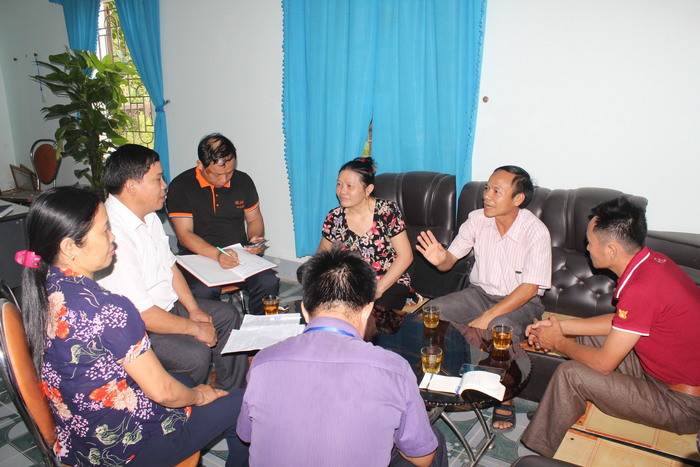 |
| Hung Nguyen District Farm Economic Association works with communes to find outlets for agricultural products. Photo: Nguyen Son |
The issue of planning for crop and livestock production areas is being implemented by the Department of Agriculture and Rural Development based on connections with localities. However, most of the planning is mainly based on land funds, production conditions, and livestock raising capacity, without being based on forecasts, market analysis, and the ability to meet the requirements of businesses.
That process also did not focus on getting opinions from industries to coordinate in connecting production, processing, and consumption (except for some seedlings linked to business needs such as: sugarcane, cassava, dairy cows, raw material forests). Therefore, agricultural products are always "disadvantaged": Lack of consumption markets and often being squeezed by businesses and traders on price.
The Department of Industry and Trade is responsible for calling on businesses to participate in connecting supply and demand, consuming agricultural products for farmers through forums, fairs, and conferences. However, the effectiveness of the connection between farmers and businesses depends on dialogue between the parties and usually the agreements and connections are verbal contracts. Meanwhile, due to the weak connection with the agricultural sector, it is difficult to grasp the quantity of agricultural products by tree, animal, crop or batch of farming...
According to many experts, from the beginning of production and breeding processes, the Industry and Trade sector needs to be informed to disseminate to businesses strategies for purchasing, processing, and connecting with consumers; but for a long time, only when the products are on the market, do the Industry and Trade sector and businesses know... Meanwhile, if they coordinate closely, the Industry and Trade sector (and businesses) will know how much rice, corn, potatoes, beans... will be available in the next 3 months and how many chickens, ducks, pigs, cows, goats... will be supplied from farmers in the next 3-6 months to build a market access strategy.
Similarly, if the Agriculture sector coordinates well with the Department of Science and Technology, there will be many advantages in implementing projects and plans to introduce new plant and animal varieties to increase value on an area and soon deploy on a large scale.
In particular, in the construction of agricultural value chains, with the requirement of labeling traceability of products, coordination must be even closer. As for agricultural cooperatives, although they are close to the people and have been transformed, have access to many training courses, new knowledge and skills, for a long time, cooperatives have only played a good role as "midwife" in providing inputs for seeds, fertilizers, pesticides, and machinery services for members and farmers; but the linkage to take care of output for members and farmers has not yet reached.
Currently, the State is focusing on consolidating and improving the operational capacity of these organizations, but the latest statistics show that in Nghe An, only about 30-35% of agricultural cooperatives operate effectively. Therefore, it requires the Cooperative Union to coordinate more closely with departments and branches to support cooperatives at the grassroots level.
When mentioning the construction of this connection, Mr. Hoang Nghia Hieu - Director of the Department of Agriculture and Rural Development said: We will coordinate with departments, branches, and local authorities to improve management responsibilities from reviewing, adjusting, and building crop and livestock planning according to market forecasts and actual situations. In addition to organizing and implementing central policies in the agricultural sector, we will focus on coordinating and implementing provincial policies well; researching and promulgating policies on land concentration and accumulation to attract businesses to invest in agriculture, and at the same time coordinating and directing the improvement of the operational capacity of agricultural cooperatives, strengthening the connection between businesses and farmers in the production, processing, and consumption of agricultural products.
| Nationwide, only 1% of total enterprises invest in agriculture and rural areas. In Nghe An, in the period 2011 - 2016, there were 35/610 investment projects in the agricultural and rural areas (about 5.7%) but mainly small and medium enterprises. |
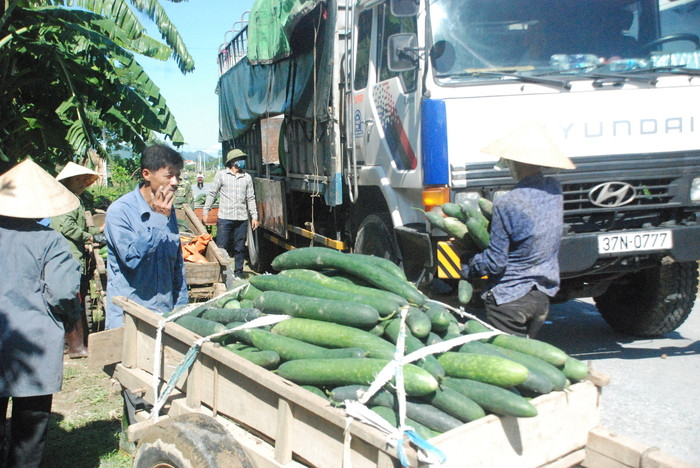 |
| People in Huong Son commune (Tan Ky) harvest green squash to sell to traders. Photo: Phuong Thao |
Need "arbitration" between businesses and people
In fact, many links between businesses and farmers have been built but often fall apart after a short time. Businesses blame farmers for “stolen” products; farmers “accuse” businesses of forcing down prices, causing difficulties by demanding too high quality standards… This is a problem that exists not only in Nghe An but nationwide. The question is, in such cases, which organization will act as the arbitrator?
About 3 years ago, Mr. Phan Van Binh's family in Dan village, Nghia Lam commune (Nghia Dan) was ordered by Tam Nong Cooperative (Vinh City) to purchase vegetables, tubers, and fruits, produced according to safe processes on an area of 1 hectare. Each season, his family grows vegetables in a safe way, without using pesticides and limiting chemical fertilizers. However, there was no written contract between the Cooperative and the family, when the consumption price was unstable, the connection broke down in distrust.
Mr. Binh hopes that when any organization registers to purchase products for people on a long-term basis, the local government needs to step in and act as an intermediary bridge so that people can feel secure in production. Or 1-2 years ago, Hung Nguyen district coordinated with 2 businesses to grow chili and carrots for sale in the area, but after only 1-2 harvests, the businesses could not find a market and left the farmers to consume. In Thanh Chuong district, according to Mr. Le Dinh Thanh - Vice Chairman of the district People's Committee, the locality also assigned a number of commune People's Committees to sign contracts with businesses to purchase agricultural products, but the sustainability is not high. Many types of broken links have occurred in many different ways, but the common point is that the damage still belongs to the farmers.
Reorganizing agricultural production is an inevitable requirement directed from the central to local levels. The core of the problem is to properly resolve the relationship between enterprises and farmers when building value chain linkages. According to Director of the Department of Agriculture and Rural Development Hoang Nghia Hieu, in the linkage process, farmers are the subject but enterprises are the center of the value chain, from which all levels and sectors have appropriate solutions and policies. Authorities at all levels, especially the district level, must play a good management and influence role so that the value chain is effective. The current characteristic of agricultural production is household scale, not qualified as a legal entity to sign linkage contracts. Therefore, the commune government or cooperative needs to sign contracts, legally binding, together with the district playing the role of arbitrator for that linkage.
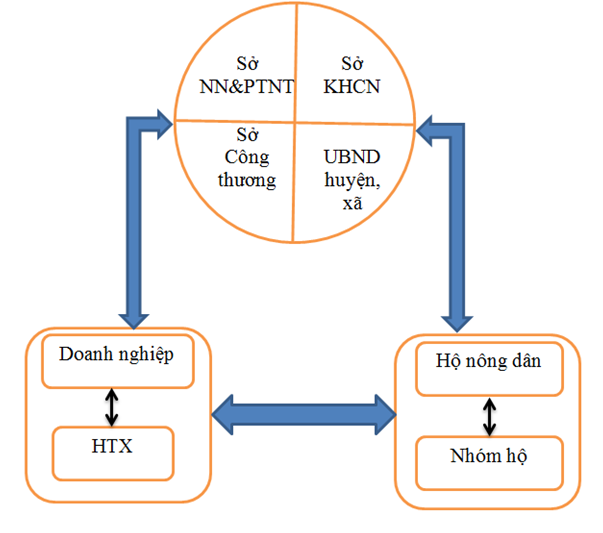 |
| Proposing a model to strengthen the linkage in agricultural production and consumption. Graphics: NN |
Although in the province there are some enterprises that invest effectively in the agricultural sector by leasing land from the State and taking on all stages, typically TH Group, Vinamilk... but in Nghe An there are over 540,000 households engaged in agricultural production, they are granted land use rights and are the subjects in building chains linked with enterprises with many products. Therefore, quickly bringing enterprises side by side with farmers to build chains linked for each agricultural product is considered a sustainable direction.
There are many models of linkage between farmers and enterprises, the most common is that enterprises purchase output products but do not invest or participate directly in the production process. This form is essentially just a "live for the moment" method, the binding of responsibilities and legal authority between the participating parties is not sustainable. Another model is that enterprises invest, participate in part of the production process of farmers and purchase products.
With the above model, the enterprise often plays the role of a buyer, purchasing all goods produced by farmers at a floor price set by the enterprise and prepaying materials, guiding the production process, and checking product quality. A model considered safe is that the enterprise is responsible for the cost of production materials including: Seeds, food, medicine...; instructing farmers on production seasons, applying techniques according to specific processes, monitoring diseases, production processes and purchasing products.
. And another model is that people contribute capital to agricultural, forestry and fishery enterprises with the value of land use rights. The strength of this model is high cooperation and risk sharing. However, once the enterprise suffers losses or fluctuations, and its finances are not transparent, farmers are likely to suffer losses.
There is a method being implemented by some localities that many households lease land to enterprises (concentrate land) and work for enterprises right on their land to create unity in management from production to processing and consumption. To do so, it is necessary to have the active participation of all levels and sectors from mass mobilization work, ensuring legality for people to strengthening management work. All linkage models need the arbitration role of departments, branches and local authorities. It is necessary that the government and departments and branches need to clearly assess the capacity of enterprises before implementing value chain linkage with farmers to ensure success and create spillover in localities.
PV Group

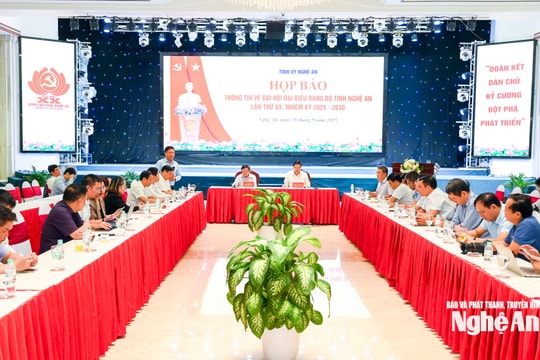



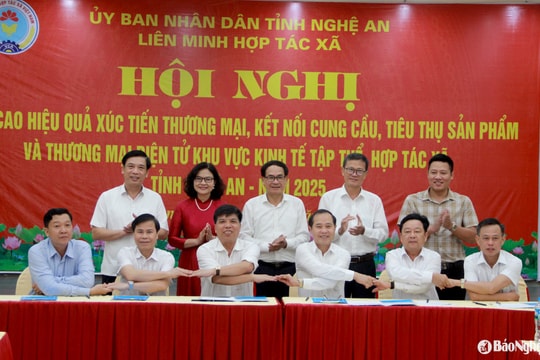
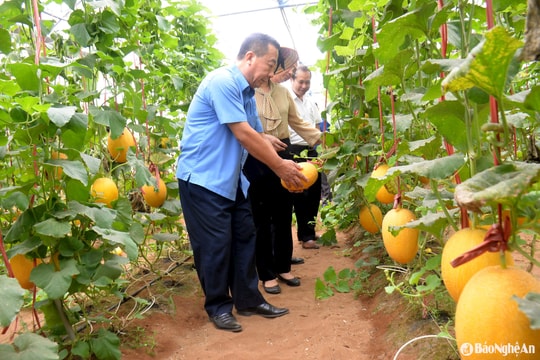
.jpg)
